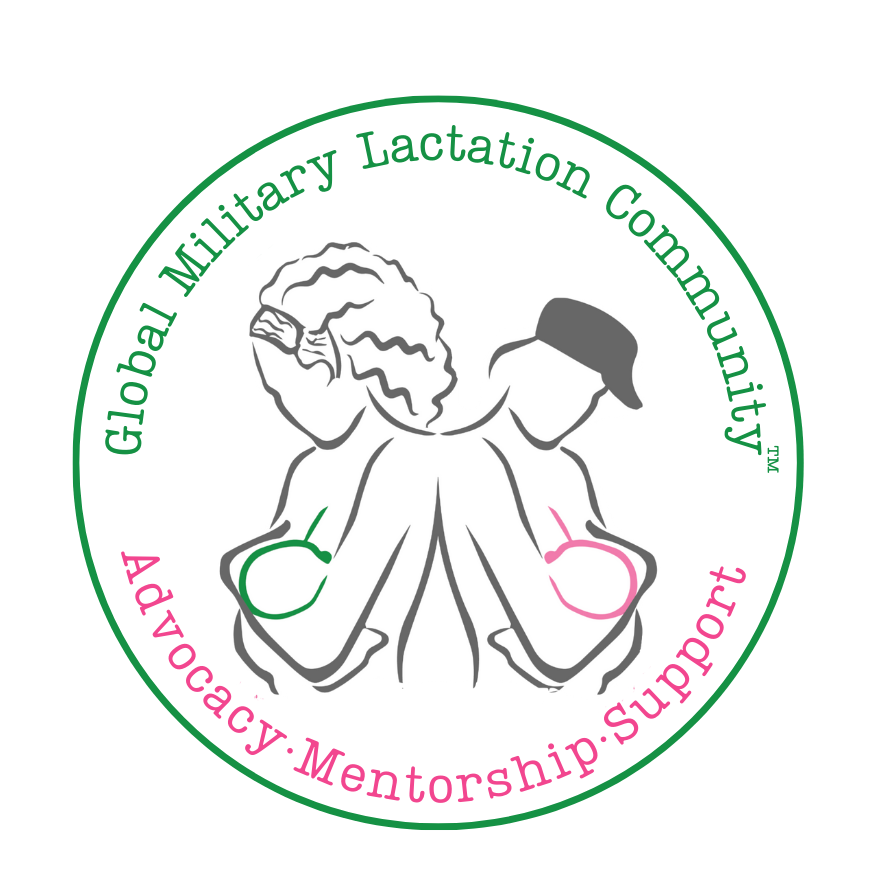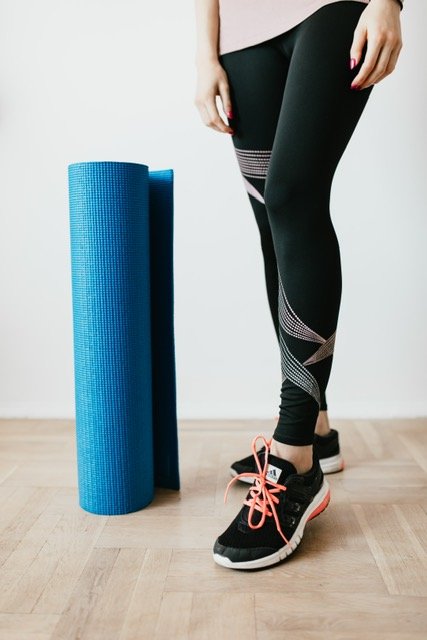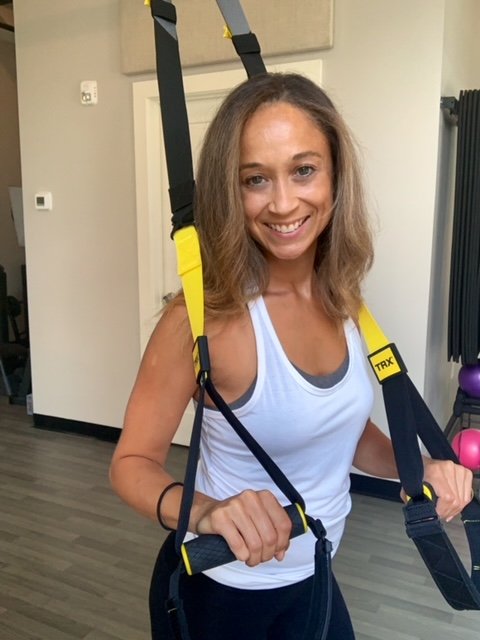#GuestBlog: Feeling Overwhelmed When You Think About Returning to Fitness?
by Ashley Reid, ACSM-EP, EIM
As we all know exercise has many physical and mental health benefits. We all are also probably somewhat familiar with exercise guidelines and recommendations. So why does beginning an exercise program after having a baby feel so difficult? The answer is that there are many real challenges for new moms. Being a military mom adds another layer of barriers and stressors. Sleep deprivation, lack of time, changed priorities, minimal support from family, fear, birth complications, pain, lack of postpartum exercise and healthcare resources, and pressure to lose weight and perform, are all very real barriers (not excuses!). Although every mom’s journey back to exercise will be different, these three general strategies can make your return to exercise a little less overwhelming.
1) Understanding Changes to Your Body: Having information and knowledge about the anatomical and physiological changes during and after pregnancy will validate why you feel weaker despite exercising during pregnancy, or why you can’t seem to lose the last five pounds, or why you’re experiencing soreness like you never have before. Understanding how the changes to your body impacts fitness is essential, yet most postpartum care doesn’t include such information. Having this understanding will help you make sense of why workouts feel so difficult, why you’re not seeing progress at the rate you’re used to, and hopefully allow yourself some grace during those first few months after having your baby.
There could be an entire book about this, but hormones play a huge role in muscle development and exercise recovery. Hormones don’t stabilize immediately after giving birth, and even when they begin to “balance out”, other hormones due to lack of sleep and stress can keep your hormones at levels that will impact your ability to lose weight, workout at higher intensities, and recover after a workout. Additionally, hormones can have an impact on your mood, affecting your motivation to exercise and desire to hit the gym like you used to. If you’re breastfeeding, you’ll have an even longer delay of hormones getting back to pre-pregnancy levels, so having the understanding that breastfeeding doesn’t automatically make it easier to change your body composition due to so many other factors, is also really important.
In addition to hormones, you need to have an understanding of tissue healing. You may be feeling stronger and ready for more physical activity, but whether you’ve had a vaginal delivery or c-section, your abdominal wall and pelvic floor tissues can take 9-12 months to fully heal and regain strength. Having this understanding is important so that you’re not choosing exercises that will do more harm than good, hence stunting your progress and inhibiting fitness results. Exercise is important in healing, but not over stressing the tissues is crucial in progressively increasing strength and function. This means if running feels overwhelming, that’s OK. Recent guidelines suggest that running and other high impact activity shouldn’t even happen until at least 12 weeks postpartum, and after proper strength training.
Hormones, tissue healing, and other factors don’t mean that you can’t exercise, in fact you absolutely should. Those factors also don’t mean that you won’t see results. What those changes to your body do mean is that you shouldn’t expect to exercise at your same pre-pregnancy level right away, and that initially, your program will probably need to look different. Having this understanding about the changes to your body means you’ll be able to gradually progress in fitness. As long as you’re moving forward with no setbacks, you’ll get there.
2) Prioritize: Being able to prioritize will help ease some of the pressure and stress around exercising. You’re probably used to thinking of fitness as aerobic, strength, and flexibility. And you’re correct, these are all major components of fitness. However, as a new mom it’s important that you make the most of your time and energy. To set yourself up for success, you should prioritize the type of workouts and exercises you’re choosing. Your first priority should be on healing. This includes any tears, incisions, scarring and any emotional trauma, depression, or anxiety. So if you once prioritized high intensity cardio and heavy weights, you’ll need a mental shift to feel good about the workouts your body needs. Next you should prioritize core strength and function, specifically addressing any concerns for abdominal separation, back pain, or pelvic floor dysfunction (pain or incontinence). Next make sure you’re functional. Functional strength training is somewhat of a trendy term, but for moms it means that you can perform all of your daily movements and demands of caring for a baby without pain. As it relates to exercise, it means you have mastered all of the major movement patterns (squat, lunge, hinge, push, pull, rotate/anti rotation) with good technique, and ability to recover. Your last priority is progressing to more vigorous physical activity and your traditional fitness goals. After you have the foundation of core strength and functional movements, you should be able to advance comfortably and with reduced injury risk. This is a simplified progression, but I like to think of Core, Function and Fitness as a pie chart with different percentages. You’ll always be working on all parts, but the percentage of each will change based on your priorities and needs.
3) Mental Shift: This has been touched on a bit already, but the first step in returning to exercise is mental. The fitness requirements of the military are relevant, but this comes secondary to how you view postpartum physical activity, especially now that you have a year to meet your military fitness and body composition goals. Your body has changed so your workouts will and should as well. The goals you once set were for a different body. Exercise should be a tool and if you begin to look at it that way, you will choose and plan your workouts differently, and with less stress. During the first few months, what type of exercise will help you heal? What type of exercise can you do without childcare? What workouts are realistic with the time you have? If you’re not sleeping, when is the best time of day to exercise and the appropriate intensity? Shifting your perspective about fitness and exercise is not a sign of weakness, but rather a helpful and smart tactic.
So now that you have those three general strategies to help you overcome the numerous barriers you face as a mom returning to exercise, I want to make very clear that being a mom does not have to negatively impact your fitness. Moms actually have an advantage when it comes to fitness. By training in a very specific way, and a way that you’ve never trained before, you have the ability to have a stronger core, be more functional, and feel stronger than you’ve ever been. Why? Because now your training will probably include pelvic floor muscles and breathing techniques, making your core function optimally. By caring for a baby, you’ll probably need to address posture, aches and pains caused by muscle weaknesses/tightness, that you just ignored before. Your workouts as a mom will now have more meaning and serve many more purposes. If you can understand what your body needs, prioritize the proper exercise progression, and change your mindset, you will feel strong and confident in your body again!
Ashley Reid is an Exercise Physiologist, Pre/Postnatal Wellness Practitioner, and the founder of the Active Mom Fitness Program. With her award-winning approach, Ashley has helped hundreds of moms stay active until their due date, safely return to exercise after having a baby, and gain strength and confidence to meet the physical demands of motherhood. As a mom herself, Ashley is thankful that exercise is a tool that allows her to be physically active with her daughter, resulting in so many fun memories!





